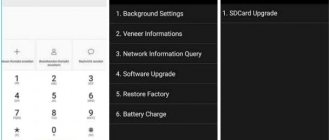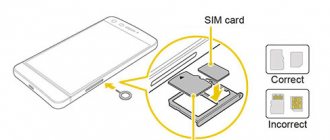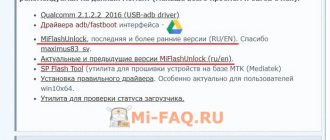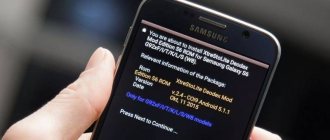Purpose of XiaoMi Flash
MIUI is an operating system created by Xiaomi Tech in which it provides the hardware and also manages all the software contents: MIUI, Mi Talk, MiHome.
Before using MiFlash, enter Fastboot mode on the device. Input mode:
- Xiaomi M1: Power + Volume key + Camera key.
- Xiaomi M2: power + volume down key.
The tool works through a fastboot connection to the device to erase or flash the software. This will help restore stock MIUI ROM on Xiaomi / Redmi devices, manually update the latest software and fix the issue like boot loops.
Before using MiFlash, you need to download the program for Windows 10/8/7; the developer provides freely accessible links to download all versions of Mi Flash. Latest version available for download v7.4.25:
- Mi Flash Tool v2018.5.28.0. Portable, no need to install it, just unpack and use.
- Mi FT v7.4.25.
- Mi FT v6.12.22.
- Mi FT v6.8.30.
- Mi FT v6.4.1.
- Mi FT v5.10.28.
- Mi FT v5.7.31.
- Mi FT v5.6.1.
- Mi FT v4.5.9.
After the user successfully downloads the program, you need to proceed to installation on the device.
Benefits of using the new version
Now the flashing process has been simplified as much as possible, because a new modification of the application allows you to do without unlocking the Bootloader. Installation of any shells on mobile devices is carried out using the standard recovery menu.
MiFlash Pro also speaks in favor of:
- Availability of a list of all the latest official shells, which becomes available after launching the program. Thanks to this, you can very quickly replace the Chinese version with a global OS, subsequent updates of which will “fly by air”;
- The ability to restore access to your smartphone if you lose your pattern key.
Currently, only a few users can use this software, due to its distribution in a closed mode. However, you can easily find the latest modification on the Internet and download Flash Pro. Please note that your computer must have a special driver installed that matches your phone's processor - Qualcomm or MediaTek.
Once the installation is complete, you will be prompted to update to the latest version. Agree, as the update process is fast and automatic.
The Home tab contains a list of Xiaomi devices. Choose the option you need.
Also pay attention to the recommendations located on the right side of the screen. Another great innovation is the presence of flashing instructions, which can be found at the bottom of the window.
Features of Flash Xiaomi Mi Tool
Firmware via MiFlash is used if you need to fix problems with battery charging, application errors, OTA errors, boot loops, “bricks”. This useful tool performs a clean installation in many cases.
For security reasons, Android deletes all data that is on the device, such as photos, applications. Therefore, before using MiFlash, it is recommended to backup your images to your computer.
The tool is specially designed for Qualcomm Xiaomi and Redmi devices to download Flash ROM quickly. Program features:
- Easy to use. The installer is available in Windows (.msi) format.
- Comes with built-in USB drivers that the user will need for a successful connection between the PC and the device.
- Firmware via MiFlash supports several devices with Qualcomm chipset.
- Has several modes. By default, the utility offers three different modes: clear all, save user data, clear all and lock.
- The tool allows you to connect and flash several devices at the same time, a decision is made about this before using MiFlash.
Xiaomi mobile phones
Smart phones from the Chinese company Xiaomi are very popular all over the world. In 2014, the company took third position in the world in mobile device sales and continues to actively develop. The Xiaomi smartphone, which has instructions in Russian on our website, is produced with built-in MIUI firmware based on Android.
Instructions for Xiaomi smartphones by model:
- Mi 2s
- Mi 3
- Mi 4
- Mi 4c
- Mi 4S
- Mi 5
- Mi 5 Pro
- Mi 5s
- Mi 5s Plus
- Mi A1
- Mi A2
- Mi A2 lite
- Mi Max
- Mi Max 2
- Mi Mix
- Mi Note
- Mi Note 2
- Mi Note 3
Additional Information
The first Mi1 device was released in August 2011, and on August 16 of the same year, the first firmware on Android was launched - MIUI, which combined the styles of Apple iOS and Samsung TouchWiz. But there was also a version of the first smartphone with pure Android. If you are looking for instructions for Xiaomi smartphones, visit our website.
The second device Мі2 was released in August 2012, has a Qualcomm Spandragon S4 processor, an Adreno 320 graphics processor and a quad-core Krait chip with two GB of memory. During the year, the company sold more than ten million Mi2 devices. An improved version of Mi-One Plus was also released.
The operating instructions for your Xiaomi smartphone are freely available on our portal. You can download any manual for free and without registering on the site.
The third device Мі3 was released in September 2013, it runs on the Spandragon 800 processor. At the same time, the Xiaomi MiTV TV of this brand was also presented. And in 2014, the well-known RedMi Note (or HongMi Note) was released, with a 5.5-inch display and OGS technology and an eight-core processor from MediaTek.
If you need to find a user manual for Xiaomi smartphones, please contact us. All service manuals for Xiaomi smart phones are presented here.
Xiaomi smartphone user manual: download PDF
To download the manual for using this device, use the search on our website. Enter the name and model of the device and click “search”. Next, you will automatically be taken to a page with a manual for your device, find the PDF file there and click on it.
Sources for downloading programs
If a user wants to install MIUI Fastboot ROM on a Xiaomi/Redmi device, they will need a special tool to complete the process. You can download Mi Flash Tool for Windows 10, 8 and 7.
Xiaomi, unlike other major smartphone manufacturers, provides links to download stock firmware for all of its devices. Before flashing via MiFlash, select the latest version of the ROM package and install it on the phone. Now there are two types of files that Xiaomi uses:
- Recovery ROM.
- Fastboot ROM.
When you install a Fastboot ROM, all partitions of the device are updated with new ones, which returns the device to its factory state. But for this you will need a special tool provided by the manufacturer. First of all, before flashing via MiFlash, download the necessary files:
- ADB Drivers.
- ADB v.1.4.3 (recommended).
- ADB FOLDER (to use the command).
- ROMS FASTBOOT MI A2.
- ROMS FASTBOOT MY A2 LITE.
MiFlash error: an object instance does not have a reference to an object
Mi Flash generates an error with the caption “The object instance does not have an object reference specified” for the following reasons:
- The path to the firmware is specified incorrectly, so the utility cannot find the installation component;
- Windows 32-bit system is used on a PC or laptop;
- the folder where the product to be installed is located is signed in Russian letters, or the name is too long;
- a damaged or unsuitable connection cord is used;
- connection slot is damaged.
How to fix
To resolve this problem, first make sure that all connecting components are connected correctly. Then check that the path and folder name are spelled correctly. Eliminate any errors and restart the process.
Terms of use My Flash
After all the files have been downloaded to your computer, you can go to the MiFlash Xiaomi Mi A2 or Mi A2 Lite firmware to activate USB debugging and OEM unlocking. To do this, go to “Settings”> “Phone information”> “Collection number” and press it several times. The developer menu will open, where two options will be activated.
Then install the ADB V1.4.3 file on your computer, which contains the ADB and fastboot drivers. Next, unzip the selected fastboot ROM folder and do the same with the ADB folder. To make this easier, you can put the ADB folder files in the ROM folder and copy a copy to the root of the hard drive (C with a short name without spaces.
Next, unzip the selected fastboot ROM folder and do the same with the ADB folder. To make this easier, you can put the ADB folder files in the ROM folder and copy a copy to the root of the hard drive (C with a short name without spaces.
After Xiaomi MiFlash is installed, open the application as an administrator to avoid errors or conflicts and, when the phone is connected, click “update”. Find the ROM folder with the files of the ADB folder on the hard drive (from the system, selecting it from My Flash in the select option. In the lower left corner there are three options, select the CLEAN AND LOCK option. It will install the OS in its pure form and unlock the bootloader. Next, click on the “flash” button and wait for the process to complete.
Find the ROM folder with the files of the ADB folder on the hard drive (from the system, selecting it from My Flash in the select option. In the lower left corner there are three options, select the CLEAN AND LOCK option. It will install the OS in its pure form and unlock the bootloader. Next, click on the “flash” button and wait for the process to complete.
Unlocking the bootloader
In order to flash Xiaomi firmware via MiFlash, the first thing you need to do is unlock the bootloader. It may be a little difficult for the user, but if the procedures are followed correctly, the results will be positive.
While in the ROM folder with the ADB files in the root C, you need to press shift and open the PowerShell window with the mouse. To enter fastboot, turn off the device and simultaneously press the volume down button with the power button.
To open the bootloader, enter fastboot oem unlock. The bootloader will ask you to confirm the action and then delete the data, the user confirms “yes” using the volume and power buttons to confirm. Once selected, the phone will restart with all data deleted.
Skip initial configuration after restart and re-enable developer settings as well as USB debugging. Reboot fastboot and enter fastboot flashing unlock_critical. After rebooting, you will have to skip the initial configuration to start USB debugging.
What do you need
Before you start flashing your phone via Fastboot, you need to prepare a little:
- Check that the phone is successful, install all the necessary drivers if this is not the case.
- Install a special MiFlash program,
also called MIUI ROM Flashing (there will be a link throughout the article). - And, of course, you can’t do without it yourself. You need to select either or the version for firmware in Fastboot mode. The download should only occur from the MIUI website
and only for your specific model!
The required file extension is “.tgz”.
If you come across
“.gz”
, just rename it. - Do not forget that for a successful operation we need an unlocked bootloader. Bootloader inactive? Then use this topic.
Global ROM without unlocking
Sometimes when flashing My Flash Tool firmware, for example, version 6.8.30, it does not allow flashing, giving an error: “the length cannot be less than zero.”
The solution to this problem was to remove it when installing the beta version of My Flash. After the installer has been downloaded MiFlashSetup-Beta.msi, launch it and confirm “Next”. During the installation process, they receive several warnings that Windows cannot verify the driver, but ignore this message by selecting the "Install" option. Once the installation process is completed, you will have direct access to the application on your desktop.
Algorithm for unpacking the official Global ROM:
- Download the official multilingual Global ROM for Redmi 4 MiFlash PRO. Select from the list with various Xiaomi mobile models until it is found: “Downloading the Fastboot file of the latest global version of Redmi 4 Prime.” Click and start downloading, approximately 1.6 GB.
- Create a folder called Xiaomi on your desktop and unzip the file with the .tgz extension. The file is easily unzipped using WinRar, creating a folder with all the necessary MiFlash PRO files.
- Launch XiaoMi Flash using the desktop shortcut and click the “Select” button on the folder created when unzipping the .tgz file.
How To Install Xiaomi Mi Flash Tool In Your Computer
1) To get started, download Mi Flash Tool zip file from the link given above and extract it to your computer.
2) Now, open up the extracted folder and click on the “ .exe
” or “
.msi
” installer file to launch the installation wizard.
3) Once you click on the installer file, XiaoMi Flash Tool installation wizard window will open up. Now click on “ Next”
“.
4) In the next window, choose your “ Destination Folder
” for install Mi Flash Tool and click on “
Next
“.
5) Now you will see the “ Confirmation”
" window.
Click “ Next
” to begin the installation process.
6) During the Installation process, you will get a Windows Security prompt. In it, click on “ Install this driver software anyway
“.
7) The installer will take a minute or two to install the Flash tool, and once it is finished, you will see the “ Installation Complete
" window.
Sometimes there comes a turning point when the firmware gets boring and you want to sit on the “good old stock”. This instruction is also suitable for people who have experienced some technical problems and need to return the device under warranty (remove the hacking flag).
Installation on Windows
Before flashing MiFlash, install the fastboot ROM that was previously selected. They delete everything that is in the internal memory of the phone. Select the path along which you unzipped the “fastboot Rom” and indicate the route. In the first version of Fastboot Script there is an option to remove the “internal SD”. After installing MiPhone, a folder will be created in C:\Program Files Xiaomi\MiPhone, for the 64-bit version. Inside they find MiFlash.
MiFlash - instructions:
- First of all, install mobile drivers on your PC.
- First make sure that the “USB” debugging option is enabled in settings >> additional settings >> development options.
- Press the MIUI version several times in settings >> phone information and on USB, which is displayed in orange.
- Connect the USB cable to the M2 or any Xiaomi and it will appear on the screen.
- A Xiaomi block (F:) will appear inside the computer. Each operating system has its own installation method, in XP you need to click on Setup.exe, in Vista and higher it is installed automatically when you connect the cable on the phone, and in Mac OS you need to install the AndroidFileTransfer.dmg file.
- Once installed, the drivers should remain on MI2 portable devices with the logo and name of the portable media player.
- To use MiFlash you will need a fast download Rom, Rom TG and an unpacked ROM. Latest versions of Fastboot rom come in compressed .tgz format, so to unzip them, right click and extract them anywhere. For example, ROM: dior_global_images_6.7.29, the ROM will correspond to the device.
- Create a folder named dior_global_images_6.7.29, go inside and copy the address in the MiFlash browser. There should be no empty space in the address that goes from C:\ to the folder where the Fastboot rom is located. Example: C:\en_la_direccion\no_espacio_en_blanco\dior_global_6.7.29. You also need to copy the compressed folder, shorten the name without spaces and move it to the C root.
- Enter Xiaomi in fast boot mode with the device turned off and using the volume down and power buttons, connect the USB cable, and then you will receive confirmation of the MiFlash program update. You can then select various formatting options, but the most recommended is FLASH_ALL for a clean install.
- The process takes a few minutes depending on the computer, device and ROM, the phone will reboot with the fastboot version that is selected.
Phone firmware
- Open the MiFlash program again. Click on the “Refresh” button, then use “..” to show the program the folder where you previously placed the required firmware.
- Next, we need to choose whether we will save the data on the phone or completely delete everything. As a rule, the second option is recommended; then the firmware will be installed most correctly. Click on the “Flash all except storage” button in order to leave the data on the phone; for complete formatting, select “Flash all”. After making your selection, click on “Flash”. Then the program will perform the selected action, and the firmware of Xiaomi Redmi 3S (or any other) will begin.
- The speed of installation of the operating system depends on the size of the firmware itself, the speed of the cable and the speed of the memory inside the device. In any case, a time investment of 10 minutes to 1 hour is quite normal.
- After MiFlash is completed, the phone will reboot on its own. If the automatic reboot was not performed, run the fastboot oem reboot-edl command in the Windows command line, or press and hold the power button on the phone until the firmware logo appears on the display. Then carefully disconnect the cable from the smartphone.
- After installing the new firmware, the phone will take a relatively long time to boot for the first time. Depending on the technical nuances of the operating system, the boot logo can hang from 5 minutes to half an hour. In exceptional cases, you can try to wait 1-2 hours provided that the phone is connected to the charger.
PC Driver Updates
Drivers are updated if the user cannot install Fastboot rom. To do this, go to the “Device Manager” on your PC. When the mobile phone is connected to the PC in Fastboot mode, in the Android USB interface and using the additional mouse button "Update Driver", the function will automatically search for the updated driver software and execute it by changing the driver name.
If the user has problems in Windows 8, which does not recognize the phone and the user cannot use My Flash, do the following:
- Windows 8 requires checking the digital signature of drivers; without completing this step, the OS does not allow you to install drivers, so you need to disable this function.
- Press the Win key + R to perform a redundancy run, which will use to enter the following command: shutdown.exe /r /o /f /t 00.
- This command will restart your computer and show a series of options where you can select the following: Solve Problems, Advanced Options, Start Settings, Restart.
- When the OS asks you to select a number, press 7, this will restart the computer again.
- Install MiFlash and do everything required in the manual.
What is needed for firmware
What will you need to have in order to successfully install new firmware?
- A computer running Windows operating system versions 7, 8, 8.1, 10 of any bit size;
- The program that will be used to install the firmware is Miflash (it will also install all the necessary drivers for operation). If you had an old version installed, then before installing the new one, you must remove the old one.
- Downloaded firmware that needs to be installed on the phone. It must be up-to-date, stable and exactly suitable for your specific phone model. The firmware format should be “.tgz”, if you only have “.gz”, just rename its format.
- Your smartphone, its model must be no older than Xiaomi Mi3 and have a Qualcomm processor.
Mandatory terms of use
In order to use the program correctly, the following prerequisites must be met:
- First of all, before starting work, you need to make a backup copy of all data, since MiFlash will erase the apk data and configuration. MiFlash is used to flash download Roms, it does not need to be used daily.
- You need to enter Rom, change the name for the update and place it in the root of the internal storage. Fastboot Roms does not come in an .exe, but in a .tgz extension, which must be extracted as a ZIP file by right-clicking.
- Before starting the installation, do not forget to remove any previous version. Flash only supports Windows 7 or higher systems with 32-bit and 64-bit architectures. Windows XP or lower supports Qualcomm devices. MiFlash Tool also does not support MTK (MediaTek).
- To use, first make sure the phone's bootloader is unlocked.
- Before flashing MiFlash Xiaomi, they perform a complete backup of the phone, having previously saved all its data on the PC.
- Install ADB and Fastboot drivers on a Windows computer (MIUI Source Link).
- Enable USB debugging mode. Go to settings > About phone > find the Miui version and press it seven times. The message “You have enabled the developer option” will appear.
- Go to the main settings.
- Open "Advanced Settings" and "Developer Options" to enable.
- Scroll down the list to find the USB Debugging option and confirm it.
Installing MiFlash
Disabling driver verification
For proper interaction between your computer and your phone, you must have Windows drivers installed. In order for them to be installed correctly into the system, you need to disable the function on your computer that verifies the authenticity of installed drivers - then the phone will be flashed without problems.
For Windows 7, restart your computer. Immediately after loading the BIOS, quickly press the F8 button several times (you may have a different key), after a short time a list of additional commands for loading the operating system will appear. In the "Advanced boot options" section, select "Disable driver signing requirement."
Remember this step, if, when following these instructions, problems arise with the driver installation, in the command line running as administrator, enter and run the following commands one after another:
bcdedit.exe /set loadoptions DDISABLE_INTEGRITY_CHECKS
bcdedit.exe /set TESTSIGNING ON
After each command, check the computer's response that the command was completed successfully, then turn off and on the computer.
In Windows 8, 8.1 and 10 environments, hold down the Shift key on the keyboard, then use the mouse to reboot through the “Start” button. Follow the path by clicking the “Diagnostics”, “Advanced options”, “Boot options”, “Restart” buttons on the screen. The system will reboot; in the corresponding screen, press F7 to use the boot option “Disable mandatory driver signature verification”.
Launch MiFlash
- Download the MiFlash program. The archive must be unpacked into a previously prepared folder with the same name along the path “C:\Android\”. To avoid syntax errors in all paths, use only the Latin alphabet, no Cyrillic alphabet, spaces and a minimum of characters.
- Select the firmware that needs to be installed. Download it to your computer and unpack the archive into the above folder.
- Run the program's executable file. Agree to start installing the drivers by clicking on the “Next” button (if the installation does not occur properly, see point 1). You will have to wait a while for the files to be unpacked and integrated into the system. After notification of successful installation, close the program window by clicking on the “End” button.
Troubleshooting
My Flash is a great tool, but it is not free from errors, and for this reason you need to learn how to fix them. If there is an error where the device is not detected, make sure that USB debugging and OEM unlocking are enabled correctly. With another error option, try changing ADB drivers.
Sometimes you can encounter the MiFlash error “Image mismatch and device errors”. This error in most cases occurs when they try to flash the wrong drive. That is, the ROM that is going to be flashed was not created for this specific device.
Error correction algorithm:
- Reboot your phone in Fastboot mode and connect it to your computer.
- Copy the contents of the images folder to the fastboot ROM, then go to the Android folder on the Xiaomi MiFlash firmware tool, for example, C:\Program Files(x86)\Xiaomi\ MiPhone\Google\Android.
- While in the Android folder, hold down the left Shift key on your keyboard, click inside that folder and select “Open Command Window,” which will launch the screen.
- Continue to run the following commands through the assistant prompt.
MiFlash
At the first stage, you need to download the software modification you have chosen, and then go to the Miflash tab. You will be prompted to install drivers. You must definitely agree to this proposal.
Now a window should appear that says Browse, then go to the folder with the shell.
After turning off the device, hold down the volume up button and the power key until vibration appears. Release the on/off button, but continue to hold down the volume key.
In the menu that appears, select Download (located at the very bottom left, yellow). For Mi Max 2, Redmi 4, Mi5, Redmi 3s, Redmi Note 4, Mi5s, Mi6, press “Volume Up” when the smartphone is turned off and connect it using a cable. The button is held until the branded hare appears on the display. This allows you to change the fastboot mode to download.
The adb archive on drive C is unpacked so that its contents end up in the C:/adb folder. To do this, perform the following sequence of actions:
- Opening the command line;
- Enter cd C:/adb;
- Enter fastboot oem edl.
As soon as the screen turns black, connect the device to the PC and wait until the drivers are installed.
Tap Refresh. If the drivers are installed correctly, the central software window will be presented in the form of a smartphone.
If the system requires a reboot, then be sure to agree, after which you will need to repeat the steps from the beginning of the application launch.
Click on Flash on your computer and wait until the flashing is completed.
This is how you can change the Xiaomi firmware with a locked bootloader and with minimal effort.
Often, a smartphone purchased in China is not intended for use in a number of other countries. We are talking about the inability to translate the gadget interface into the native language. Thus, a Xiaomi phone purchased in China may not be familiar with the Russian language. Also, its software may lack familiar services. It's all about the firmware. There are several types of them. The most popular are:
1. China ROM. They are intended for the domestic national market, do not have support for the Russian language and are full of various services that will not work in other countries, i.e. useless. The name contains the letters CN (may be in the middle of the article).
2. Global ROM - global systems intended for the European market. They support the Cyrillic alphabet and do not have Asian applications. The word “Global” is inserted into the title.
If it already happens that you have a “non-Russian” gadget in your hands, then you can reflash it. You can do this yourself in two stages.
Return to previous update
It may happen that after updating the device there are problems or incompatibility. In this case, you can wait or revert to an earlier version. Options for solving problems with notifications in MIUI:
- Downgrade to MIUI. This process of reverting to a previous update is called downgrading. It is similar to upgrading from the current version to the old one, which is better and although it has fewer features, it is more stable.
- "Hard reset". If the user does a deep clean of their device with a hard reset, it is possible to get their Xiaomi phone back as if it was from the factory. This is one of the fastest ways to go back in time and get the version that came with the device. Make a backup first, so all information from the phone will be deleted. This process can be easily started from recovery.
To return to the previous version, before flashing Xiaomi via MiFlash, you will need to choose one of the following routes:
- Clean installation from My Flash, with the bootloader open/unlocked, perform a clean installation from My flash. Thus, you can go back to the previous version of MIUI at any time and without any difficulties.
- TWRP makes it easy to downgrade to previous versions of Xiaomi.
- Versions of Android later than lollipop come with OEM Unlock in the developer options. So, it is quite easy to unlock the bootloader on any latest smartphone.
How to flash Xiaomi via Miflash
How to flash Xiaomi via Miflash . With all their advantages in terms of the quality of the hardware components used and assembly, as well as innovations in the MIUI software solution, smartphones produced by Xiaomi may require the user to flash or restore them. The official and, perhaps, the easiest way to flash Xiaomi devices is to use the manufacturer’s proprietary program – MiFlash.
Firmware for Xiaomi smartphones via MiFlash
Even a brand new Xiaomi smartphone may not satisfy its owner due to an inappropriate MIUI firmware version installed by the manufacturer or seller.
In this case, you need to change the software by using MiFlash - this is actually the most correct and safe way. It is only important to strictly follow the instructions and pay close attention to the preparatory procedures and the process itself. Important! All actions with the device through the MiFlash program carry potential danger, although problems are unlikely.
The user performs all the manipulations described below at his own peril and risk and is responsible for possible negative consequences himself! The examples described below use one of the most popular Xiaomi models - the Redmi 3 smartphone with an NOT unlocked bootloader. It is worth noting that the procedure for installing official firmware via MiFlash is generally the same for all brand devices that are based on Qualcomm processors (almost all modern models, with rare exceptions). Therefore, the following can be applied when installing software on a wide range of Xiaomi models.
Preparation
Before moving on to the firmware procedure, it is necessary to carry out some manipulations related primarily to obtaining and preparing firmware files, as well as pairing the device and PC.
Installing MiFlash and drivers
Since the firmware method in question is official, the MiFlash application can be obtained on the device manufacturer’s website.
1. Download the latest version of the program from the official website using the link from the review article:
2. Install MiFlash. The installation procedure is completely standard and does not cause any problems. You just need to run the installation package
and follow the installer's instructions.
3. Drivers for Xiaomi devices are installed along with the application. If you encounter any problems with the drivers, you can use the instructions from the article: Installing drivers for Android firmware
Firmware download
All the latest versions of official firmware for Xiaomi devices are available for download on the official website.
To install the software via MiFlash, you will need a special fastboot firmware containing image files for writing to the smartphone’s memory sections. This is a file in *.tgz format, the download link for which is “hidden” in the depths of the Xiaomi website. In order not to bother the user with searching for the required firmware, a link to the download page is provided below.
1. Follow the link and find your smartphone in the list of devices that opens.
2. The page contains links to download two types of firmware: “ China ” (does not contain Russian localization) and “ Global ” (the one we need), which in turn are divided into types – “ Stable ” and “ Developer ”.
- “ Stable ” firmware is an official solution intended for the end consumer and recommended by the manufacturer for use.
- The “ Developer ” firmware contains experimental functions that do not always work stably, but is also widely used.
3. Click on the name containing the name “ Latest Global Stable Version Fastboot File Download ” - this is the most correct solution in most cases. After clicking, the download of the desired archive begins automatically.
4. Once the download is complete, the firmware must be unpacked using any available archiver into a separate folder. A regular one is suitable for this purpose.
Transferring the device to Download mode
To flash firmware via MiFlash, the device must be in a special mode - “ Download ”.
In fact, there are several ways to switch to the mode required for installing software. Let's look at the standard method recommended for use by the manufacturer.
1. Turn off the smartphone. If the shutdown is carried out through the Android menu, after the screen goes dark, you need to wait another 15-30 seconds to be completely sure that the device has turned off completely.
2. With the device turned off, press the “ Volume+ ” button, then, while holding it, press the “ Power ” button.
MI logo appears on the screen , release the “ Power ” key and hold the “ Volume + ” button until the menu screen with a choice of boot modes appears.
4. Click the “ download ” button. The smartphone screen will go dark and it will stop showing any signs of life. This is a normal situation that should not cause concern to the user, the smartphone is already in “ Download ” mode.
5. To check that the pairing mode between your smartphone and PC is correct, you can access the Windows “ Device Manager ”. After connecting the smartphone in “ Download ” mode to the USB port, Qualcomm HS-USB QDLoader 9008 (COM**) item should appear Ports (COM and LPT) .
Firmware procedure via MiFlash
So, the preparatory procedures are completed, let’s move on to writing data to the smartphone’s memory sections.
1. Launch MiFlash and press the “ Select ” button to indicate to the program the path containing the firmware files.
2. In the window that opens, select the folder with the unpacked firmware and click the “ OK ” button.
Attention! You need to specify the path to the folder containing the “Images” subfolder obtained as a result of unpacking the *.tgz file.
3. Connect the smartphone, switched to the appropriate mode, to the USB port and press the “ refresh ” button in the program. This button is used to identify the connected device in MiFlash.
For the success of the procedure, it is very important that the device is identified correctly in the program.
You can verify this by looking at the item under the heading “ device ”. The message “ COM** ” should be displayed there, where ** is the port number on which the device was detected.
4. At the bottom of the window there is a firmware mode switch, select the one you need:
- “ clean all ” - firmware with preliminary clearing of partitions from user data. It is considered an ideal option, but it deletes all information from the smartphone;
- “ save user data ” - firmware with saving user data. The mode saves information in the smartphone’s memory, but does not protect the user from errors when operating the software in the future. In general, applicable for installing updates;
- “ Clean all and lock ” - completely clears the smartphone’s memory partitions and locks the bootloader. Essentially, bringing the device to its “ factory ” state.
5. Everything is ready to begin the process of writing data to the device’s memory. Press the “ flash ” button.
6. Watch the progress bar fill up. The procedure can last up to 10-15 minutes.
During the process of writing data to the device’s memory sections, the latter must not be disconnected from the USB port and the hardware buttons on it must not be pressed! Such actions may damage the device!
7. The firmware is considered complete after the inscription “ success result .
8. Disconnect the smartphone from the USB port and turn it on by long pressing the “ Power ” key. The power button must be held until the “ MI ” logo appears on the device screen. The first launch takes quite a long time, you should be patient.
This is how Xiaomi smartphones are flashed using the generally excellent MiFlash program. I would like to note that the considered tool allows in many cases not only to update the official software of the Xiaomi device, but also provides an effective way to restore even seemingly completely non-functional devices.
Firmware via Updater
Once the download is complete, move the ROM file to the Internal Storage/download.rom folder. MIUI users can store it in any folder in the internal memory. Open “Settings” → scroll down until the “About phone” information appears, click “System update”. Next, click the button with 3 dots in the upper right corner → “Select update package” → enter into the folder containing the ROM firmware files → OK. After a few seconds, your Redmi device will reboot and the flashing process will be completed.
Similar actions can also be performed through “system update” using → Phone settings → System update → check for update. Typically the ROM is in .zip format. The boot process will take a long time, it is recommended that you do not rush to press the power button. Before flashing, the device must be Wipe data via Mi Recovery to prevent errors from the previous ROM.
Recovery
To put your smartphone into recovery mode, you must turn it off. After turning off, press the volume and power keys for five seconds. As soon as you feel the vibration, a menu will appear on the display, presented in Chinese. In order to switch to English, you need to touch the item under the inscription “recovery”.
Give your consent to switch to the desired mode by clicking on “OK”, then wait for the device to automatically reboot.
Pressing the volume keys, look for the Connect with MiAssistant sub-item. To confirm the action, you must use the on/off button.
As soon as you see an image of a wire on the screen, immediately connect the device to your computer. Be sure to download the shell version that suits you from ROM packages. Then go to the Recovery tab, and then log in to your Mi account.
After a while, you should touch the image with the “three dots” and select the saved firmware file. You can recognize it by the extension “.zip”.
The information will be checked for a couple of minutes, the completion of which will be indicated by a green checkmark. If you select Flash, the device will be reflashed while saving the information. When you select Wipe User Data, the device’s memory will be cleared, and to continue flashing you will have to click on “Flash” again.
When the gadget is flashed, the message “flash successful” will appear. You can disconnect the product from the PC and wait until it boots.
XBL Workarounds
Some workarounds to fix the XBL error issue found while flashing MIUI Fastboot ROM using Mi Flash tool. Xiaomi phones such as Redmi Note 5 Pro/AI/Global (Whyred), Redmi 5/5Plus, Mi 8, Mi 6X, Mi5s, Redmi Note 4X and Redmi 5A are facing this problem. There is no exact information about what caused this problem. Therefore, based on what was reported on the Internet, experts have summarized some possible fixes:
- Double check the downloaded ROM file.
- Make sure that this is the correct build of MIUI, released specifically for the phone model. Each Fastboot ROM version has the device codename in its file name.
- Check the codename of the device, for example, Redmi Note 5 Global/Pro has the codename Whyred. The file must also have Whyred as a name component.
- Upload the file again if it is found that the old one did not meet the requirements.
- Unpack the correct ROM file again.
- Trying again to unpack the tgz file sometimes resolves the issue.
- Trying to use a different USB cable to transfer data. Make sure this is a data cable and not just a charging cable.
- Use a different USB port on the computer. Although USB 3.0 can work, USB 2.0 is still more capable for these purposes.
- They will try to install the latest version of Android Platform Tools. The ADB and Fastboot driver versions will be updated on your computer.
- Reinstall Mi Flash tool using the following sequence: remove the tool> disable driver signature enforcement> reinstall.
What does "Locked bootloader" mean?
Bootloader (or “Loader”) controls the startup process of the operating system. This is analogous to a computer BIOS. If system files are damaged, the bootloader will allow you to activate recovery mode and reset the gadget to default settings.
In the latest models, Xiaomi Bootloader is blocked. This means that it will not be possible to reflash the device using standard methods. The manufacturing company sets a similar restriction so that third-party software is not loaded onto the devices, but rather they use a system that is specially designed for this gadget.
Online stores often install their own firmware. It may be filled with useless adware or be unstable. A blocked bootloader prevents you from downloading an incompatible OS to your Xiaomi device.
But this defense mechanism also has disadvantages. If you are somehow not satisfied with the factory Firmware, then you cannot change it, but you will have to look for workarounds.
You can try to remove the restriction by submitting an official request to Xiaomi. However, this doesn't always work.
You can find out if your bootloader is locked like this:











